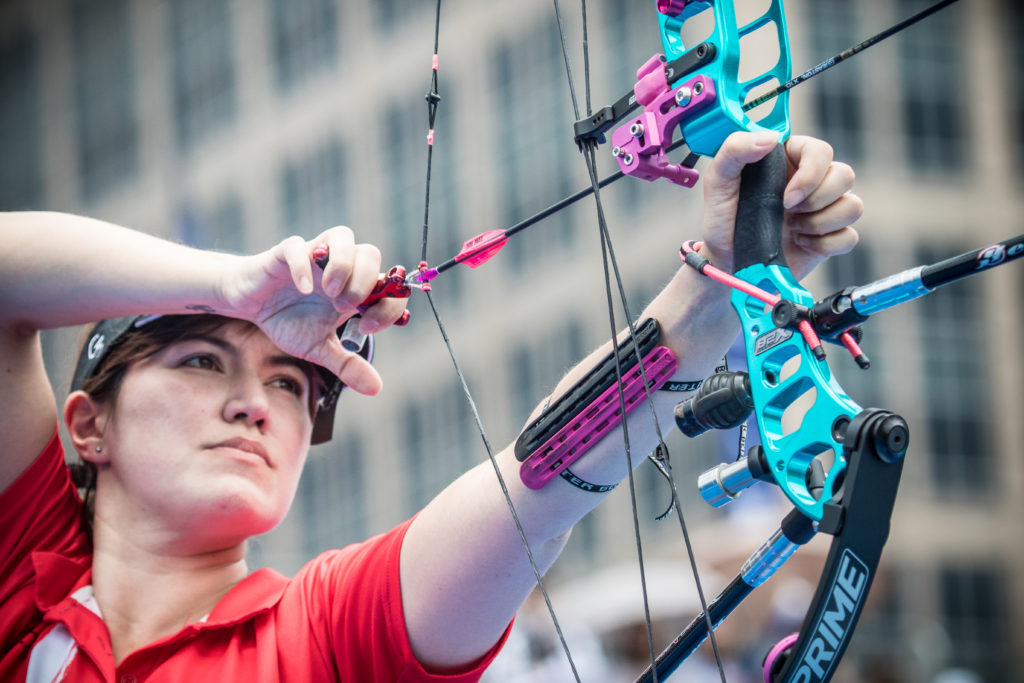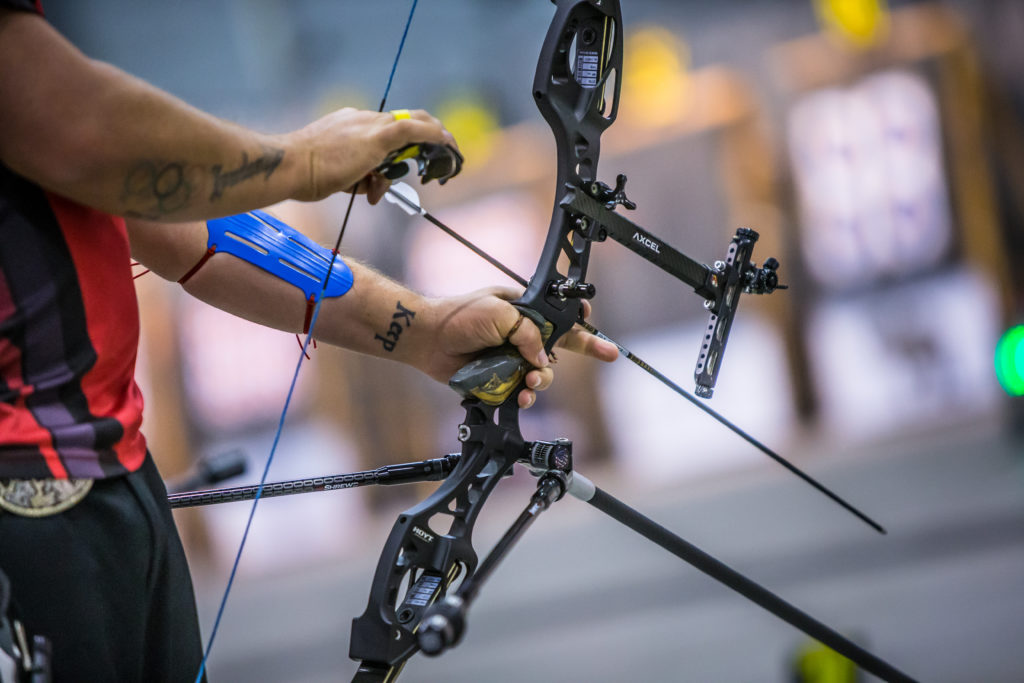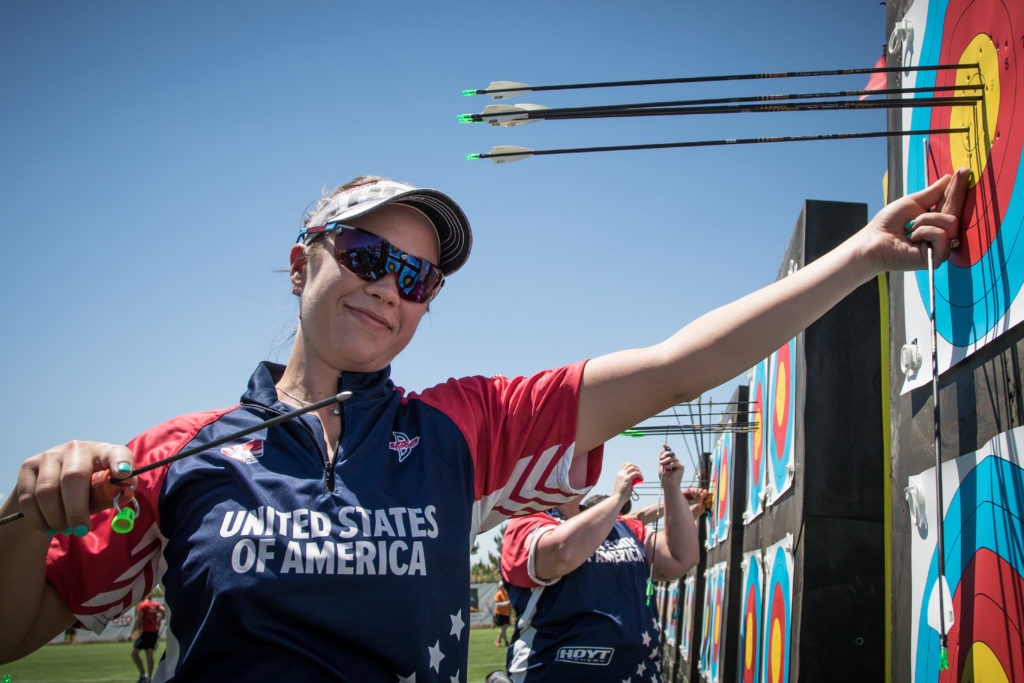Our expert panel answers your questions on all things archery. Send yours to john.stanley@futurenet.com.
Q: How do I stop my peep sight from twisting?
Having an unruly peep sight can be extremely irritating; a peep that twists out of alignment when at full draw or slowly creeps round during your shot can obscure your sight picture and make your results inconsistent.
You may even find that your peep sight is perfect one minute but out of alignment the next, so why does it behave like this and how do you fix it?
Bow strings have twists in them in order to bundle the fibres up and create a strong and stable platform for the arrow. These twists make the string more reliable and allow you to make adjustments to ensure it’s the correct length for your set up, but they can also highlight any problems in your string – and these problems are never so evident than with a peep sight.
As you draw a compound bow, the cam changes the amount of force going through the string; this in turn can cause the string to twist slightly and the peep sight to improperly rotate.
There are a number of reasons for this, such as incorrect serving direction when the string was built, lack of tension during the serving process or too few / too many twists in the string.

Some of these issues are very difficult to fix as the problem occurred during the building of the string, which is why it is important to find a reputable string maker. But if your string is of good quality and has no visible defects you should first make sure that your peep is located in the middle of the string with an equal numbers of strands each side.
This position is easy to see on two-colour strings but can be difficult to find on single or multi coloured options. It is usually marked by the string maker using a length of serving and it’s important to fit your peep in this position if you want it to rotate correctly.
If your peep is twisting to a consistent position this can be adjusted by adding or taking twists from the string; it takes roughly three twists in or out the string to make the peep do a complete 360 degree turn, so correcting a slightly out of line peep may only take one or even a half twist to fix.
Once you have made the adjustment make sure that your D-loop is straight, draw the bow to check the peeps position and then keep making small adjustments until it is rotating to the correct position at full draw.
If you are finding it impossible to get a consistent position or the peep keeps moving try untwisting the string completely, being careful to count the number of twists first and then re-twisting it by the same amount in the same direction.
Now try drawing the bow several times to see if the peep is rotating consistently, if it is you can go ahead and set it so it is coming round square using the above method as best you can.
If this still doesn’t work you should check your D-loop and the ‘tie ins’ used to secure your peep to the string. If your D-loop is loose and is constantly moving then you will be twisting the string inconsistently every time you draw your bow.
Make sure it is pointing in the opposite direction to the arrow and is tied on tightly; you can move it a tiny bit so it helps pull the peep straight if needed, but this isn’t ideal so always try the twisting method first.
If your peep isn’t tied in correctly it may move up or down the string while you shoot, which will not only cause it to rotate differently but it will alter you sight marks and anchor point. There are various methods for tying in a peep but whichever one you use make sure you tie it in tightly as you can so that it cannot move at all.
If all else fails it may be time for a new string, especially if yours is getting a little old, however if your current string is fairly new try re-serving it first as this may also help to fix any persistent peep rotation problems.
DUNCAN BUSBY
Q: How should I measure progress?
I began seven months ago and my average 70m score is around 530. Is this a good way to determine progress, or rather: how should I balance the desire to achieve good scores, with the need to adhere to good form? My age is 54 so I’m not sure I have 10 or 15 years to slowly build up.
Goals to track your progress are only limited by your imagination. Have a think about what excites you and what will be useful to you. Scores are one thing, progress is another.

If your focus is on technique what part of the technique is it that you specifically want to improve? How could you track improvement? Are you able to perform a skill with a theraband but not a light bow?
Write in your journal how it feels or looks to perform it on the theraband and what might be limiting you from performing it on the light bow, followed by your plan on overcoming those limitations. Overtime you can track improvements using descriptions, diagrams or photographs.
If you are able to perform a certain skill on your own bow, but you are not able to perform it consistently, then you could tally how many times you perform it correctly.
Making the tally immediately after the shot gives a stronger positive reinforcement and reward. At the end of the session write in your journal how you did, e.g. “I made 47/80 good releases today, that is 59%” or “the string touched my nose straight away on 50/72 shots, that is 69%”.

You could mix technique and score tracking, e.g. if you want fewer soft shots which send arrows low, you could draw a horizontal line at the bottom of the gold or red (wherever may be appropriate for you) and score, but if you have an arrow under the line the arrow scores zero. That’s a little fun incentive to make strong shots.
Some other fun score trackers that you could use are:
- How many golds can you get out of 36 shots?
- How many shots does it take you to achieve 36 golds?
- How many consecutive 8s or better can you get?
- How many ends of 50+ can I achieve out of 12 ends? (Make them a suitable level and distance for you).
Other things that you may want to track include:
- Your perception of how well you are able to focus.
- Your bow specific strength
- Your journey of learning and understanding of archery technique and equipment
- Your ability to cope with wind and rain
You don’t need to do the activity every time you shoot, you may decide to track technique once a week and a fun, outcome-based activity once a month, but whatever you decide to track needs to be relevant, motivating and exciting to you.
NAOMI FOLKARD
Thanks to Ian Furniss for the question.

